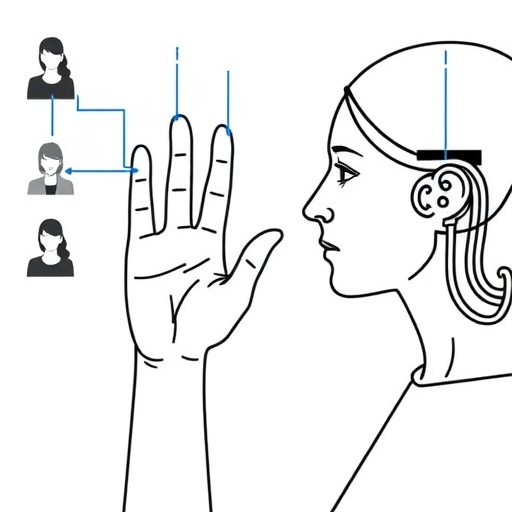As the world continues to evolve through technological advancements, the need for efficient and user-friendly communication methods has never been more crucial. Sign language recognition (SLR) systems have emerged as a revolutionary way to bridge the communication gap between hearing and deaf individuals. Recent research highlights the rapid advancements made in this field, alongside the persistent challenges that remain. The exploration of these systems represents not only a technical endeavor but a significant step toward greater inclusivity in digital communication.
The journey of sign language recognition technology has taken substantial strides in recent years, with researchers focusing on integrating artificial intelligence and machine learning to enhance recognition accuracy. These technologies have made it possible for computers to interpret sign language gestures, translating them into written or spoken language by employing sophisticated algorithms. A significant portion of recent SLR advancements has been made possible by the influx of deep learning architectures and frameworks that allow for improved feature extraction and classification of dynamic movements.
However, despite these technological leaps, several challenges persist in the design and implementation of effective SLR systems. One notable challenge lies in the diversity and complexity of sign languages worldwide. Each region has its unique signs, gestures, and grammatical structures, making it difficult for a single system to accurately recognize and translate the nuances of various sign languages. Researchers must strive for a more comprehensive approach that appreciates the rich diversity among sign languages while still delivering a seamless experience to users from different backgrounds.
Data collection is another significant hurdle facing the development of sign language recognition systems. Quality datasets are essential for training machine learning models, but gathering extensive and representative datasets remains a complex endeavor. Researchers have been working tirelessly to compile large-scale datasets that encompass diverse sign languages, accounting for variations in dialects and regional signs, but this task is fraught with ethical considerations around consent and accessibility.
Moreover, real-time recognition of signs poses a further complication. For SLR systems to be practical, they must be capable of processing and interpreting gestures in real time without significant latency. This speed is critical, especially in applications such as live translation in conversations. The development of algorithms that can detect and recognize signs instantaneously, even amidst background noise or low-light environments, is a major focus area within the research community.
Another area of exploration involves the integration of multimodal approaches. Recent studies have suggested that combining visual information with contextual data, including auditory and textual clues, can enhance the accuracy of sign language recognition systems. This multimodal framework allows the recognition system to better understand the context in which signs are used, thereby improving translational accuracy and user experience.
Despite the challenges, innovations in hardware have paved the way for more sophisticated SLR systems. The increasing availability of powerful cameras, sensors, and wearables has enabled researchers to experiment with different modalities for gesture capturing. Advanced depth-sensing technologies and motion capture systems offer a wealth of data that can enhance the capacity of SLR systems to differentiate and understand nuanced movements.
Currently, the applications of SLR systems are expansive and growing. From educational settings that support deaf students to customer service environments where inclusivity is paramount, the demand for effective sign language recognition is clear. The healthcare industry, too, stands to benefit significantly from these advancements, particularly for facilitating communication between patients and medical personnel. This breadth of application underscores the relevance and urgency of ongoing research and development in the field.
Looking towards the future, there is a pressing need for collaboration among researchers, technologists, and the hearing-impaired community to create tools that truly meet the needs of all users. Engaging with stakeholders from the deaf community can provide critical insights that inform SLR design, ensuring that the developed systems are intuitive and user-friendly. This community engagement can also help researchers better understand practical challenges faced by users and incorporate their feedback into iterative designs.
In academia, the rise of sign language recognition technology prompts new lines of inquiry regarding the intersection of language, technology, and society. It raises important questions about language representation in digital platforms and the role of technology in shaping communication norms. These discussions not only enrich the field of informational technology but also contribute to broader understandings of cultural diversity and inclusion.
Ultimately, the success of sign language recognition systems hinges on addressing the technical challenges while remaining committed to the ethical implications of development. As these systems advance, maintaining a focus on responsible innovation will be critical. This includes making SLR technologies accessible to all, regardless of socioeconomic background or geographical location, and ensuring that they uphold the integrity of sign languages as unique linguistic systems.
In conclusion, while sign language recognition technology faces significant challenges and complexities, the potential benefits are immense. As research continues to progress, transforming the way we think about communication, inclusivity, and technology, the prospect of bridging the gap for the deaf community and creating a more interconnected world is closer than ever. The next few years will undoubtedly witness transformative changes that will redefine communication landscapes, emphasizing the importance of accessibility and understanding in our increasingly digital world.
Subject of Research: Sign Language Recognition Systems
Article Title: A Comprehensive Survey on Recent Advances and Challenges in Sign Language Recognition Systems
Article References:
Violet, I.M.M., Leena Sri, R. A comprehensive survey on recent advances and challenges in sign language recognition systems.
Discov Artif Intell (2025). https://doi.org/10.1007/s44163-025-00629-7
Image Credits: AI Generated
DOI:
Keywords: Sign Language Recognition, Artificial Intelligence, Machine Learning, Communication Technology, Accessibility, Multimodal Approaches.
Tags: advancements in sign language recognitionartificial intelligence in sign languagebridging communication gapschallenges in SLR systemsdeep learning applications in SLRdiversity in sign languagesgesture recognition algorithmsimproving SLR accuracyinclusivity in digital communicationmachine learning for sign languagesign language recognition technologytechnical hurdles in sign language recognition





